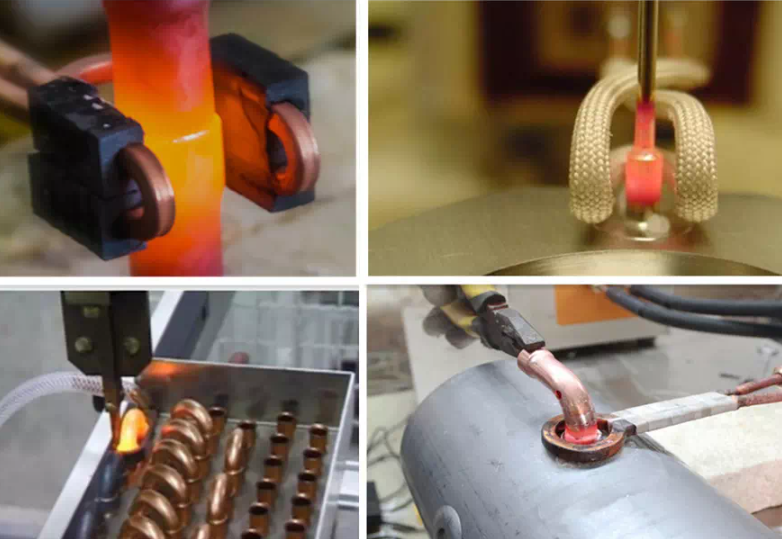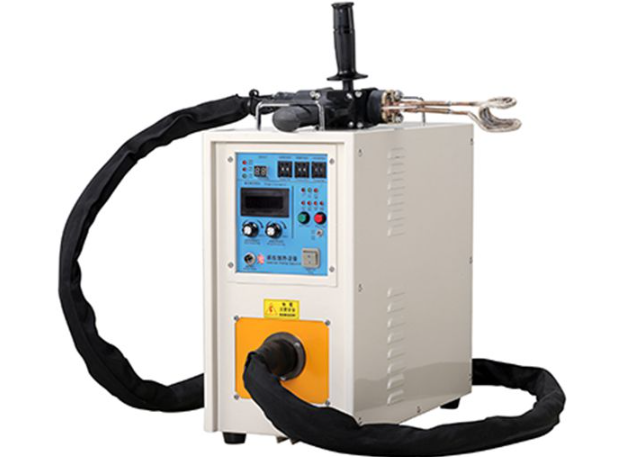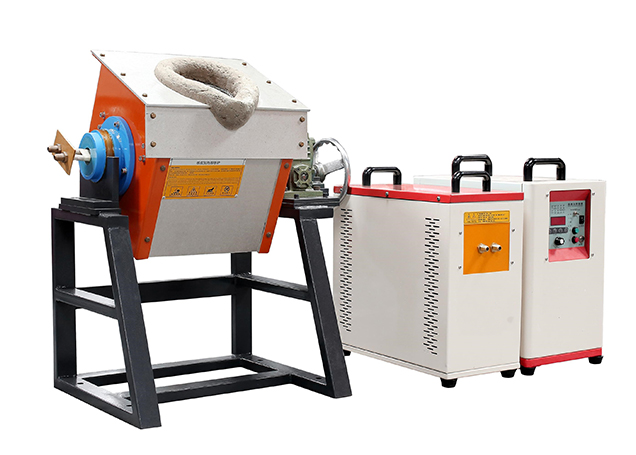Induction brazing machines have become invaluable tools for joining metal components with precision and efficiency. The principle behind these machines involves the use of electromagnetic induction to generate heat for the brazing process. In this article, we will delve into the workings of induction brazing machines, exploring the key components and the underlying principles that make them essential in various industries.
I. Electromagnetic Induction: The Core Principle
At the heart of induction brazing machines lies the principle of electromagnetic induction. This fundamental concept, discovered by Michael Faraday in the early 19th century, involves the generation of electrical currents in a conductor when exposed to a changing magnetic field. In the context of induction brazing, a high-frequency alternating current is passed through a coil, creating a rapidly changing magnetic field.
The principle of induction brazing is similar to the transformer principle, where the inductor is the primary winding and the part to be heated acts as a single turn secondary winding.
The main advantage of induction brazing is its precisely localized heat. The induction heating coil can be placed directly on the joint, providing a more consistent amount of heat than a torch. Another advantage is that induction brazing is more repeatable than traditional brazing. The induction brazing process has a predictable heat profile (essentially, the amount of heat provided over time), which is more consistent than traditional brazing and can be automated. It does not depend on operator’s skills as much as the torch brazing.

II. Heating the Workpiece: Inductor Coils and Eddy Currents
Inductor Coils:
The inductor coils, also known as the induction coil or work coil, play a pivotal role in the induction brazing process. These coils are carefully designed and positioned to direct the electromagnetic field towards the workpiece. The number of turns in the coil, along with its shape and size, determines the efficiency and effectiveness of the heating process.
Eddy Currents:
As the changing magnetic field produced by the inductor coil interacts with the metal workpiece, it induces eddy currents within the material. These eddy currents, circulating through the metal, generate heat due to the material's resistance to the electrical flow. It is this heat that facilitates the brazing process, causing the filler material to melt and form a strong bond between the components.
III. Controlling the Process: Power Supply and Frequency
Power Supply:
The power supply unit of an induction brazing machine is a critical component that provides the necessary electrical energy to drive the process. The power output is adjustable, allowing manufacturers to control the heat generated during brazing. Precise control over the power input ensures that the brazing temperature is reached without causing unnecessary overheating.
Frequency:
The frequency of the alternating current is another parameter that influences the induction brazing process. Higher frequencies result in more intense heating near the surface of the workpiece, making it suitable for applications where localized heating is essential. Conversely, lower frequencies penetrate deeper into the material, making them suitable for larger or denser workpieces.
IV. Advantages of Induction Brazing Machines
Precision and Consistency:
Induction brazing machines offer unparalleled precision and consistency in the heating process. The ability to control the temperature and distribution of heat ensures that components are joined with accuracy, reducing the likelihood of defects and improving overall product quality.
Efficiency and Speed:
Compared to traditional brazing methods, induction brazing is a faster and more efficient process. The rapid heating capabilities result in shorter cycle times, increasing overall productivity in manufacturing processes.
Clean and Environmentally Friendly:
Induction brazing generates heat directly within the workpiece, eliminating the need for open flames or external heat sources. This not only enhances safety in the workplace but also contributes to a cleaner and more environmentally friendly manufacturing environment.
V. Applications of Induction Brazing Machines
Induction brazing machines find applications across a wide range of industries, including automotive, aerospace, electronics, and medical devices. They are particularly well-suited for joining dissimilar metals, producing strong and durable connections in critical components.
VI. Conclusion: Revolutionizing Metal Joining
In conclusion, the principle of electromagnetic induction is the driving force behind the efficiency and precision of induction brazing machines. As technology continues to advance, these machines play a pivotal role in revolutionizing metal joining processes across various industries. The ability to control heat with precision, along with the advantages of speed, efficiency, and environmental friendliness, makes induction brazing an indispensable tool for modern manufacturers.
For more information on induction brazing machines and to explore options for your manufacturing needs, feel free to contact us. As a leading supplier in the industry, we are committed to providing cutting-edge solutions for your brazing requirements.








